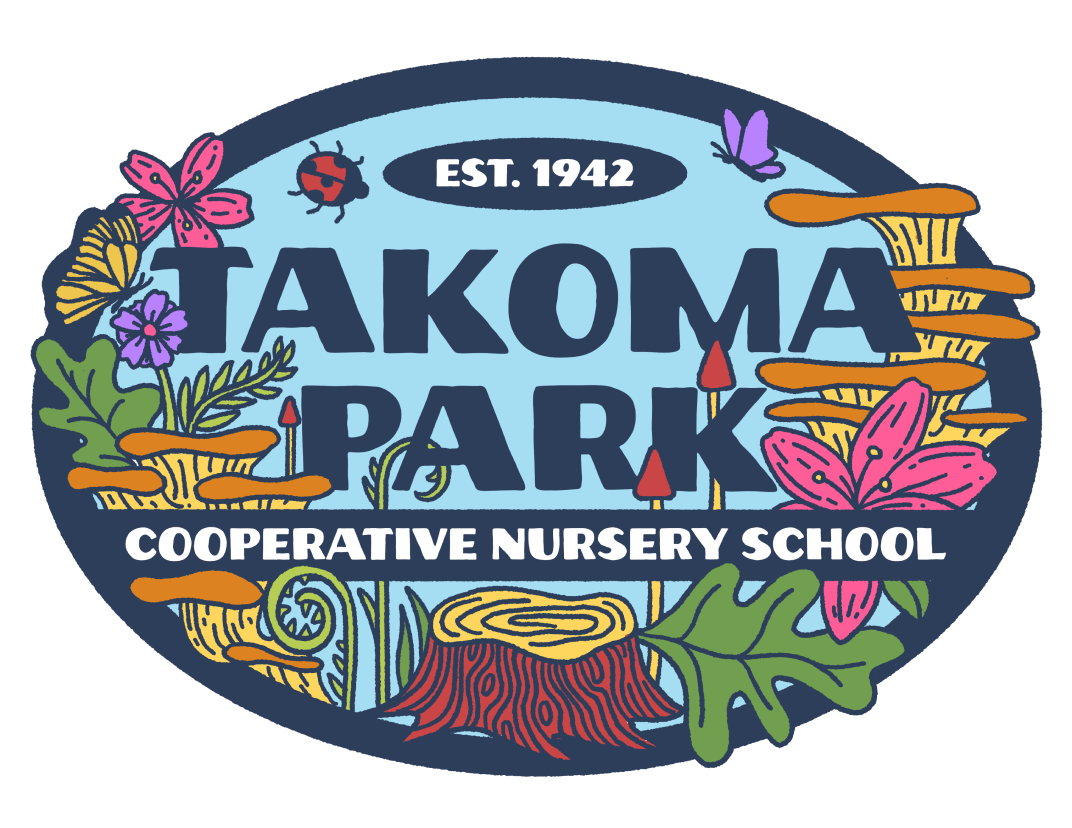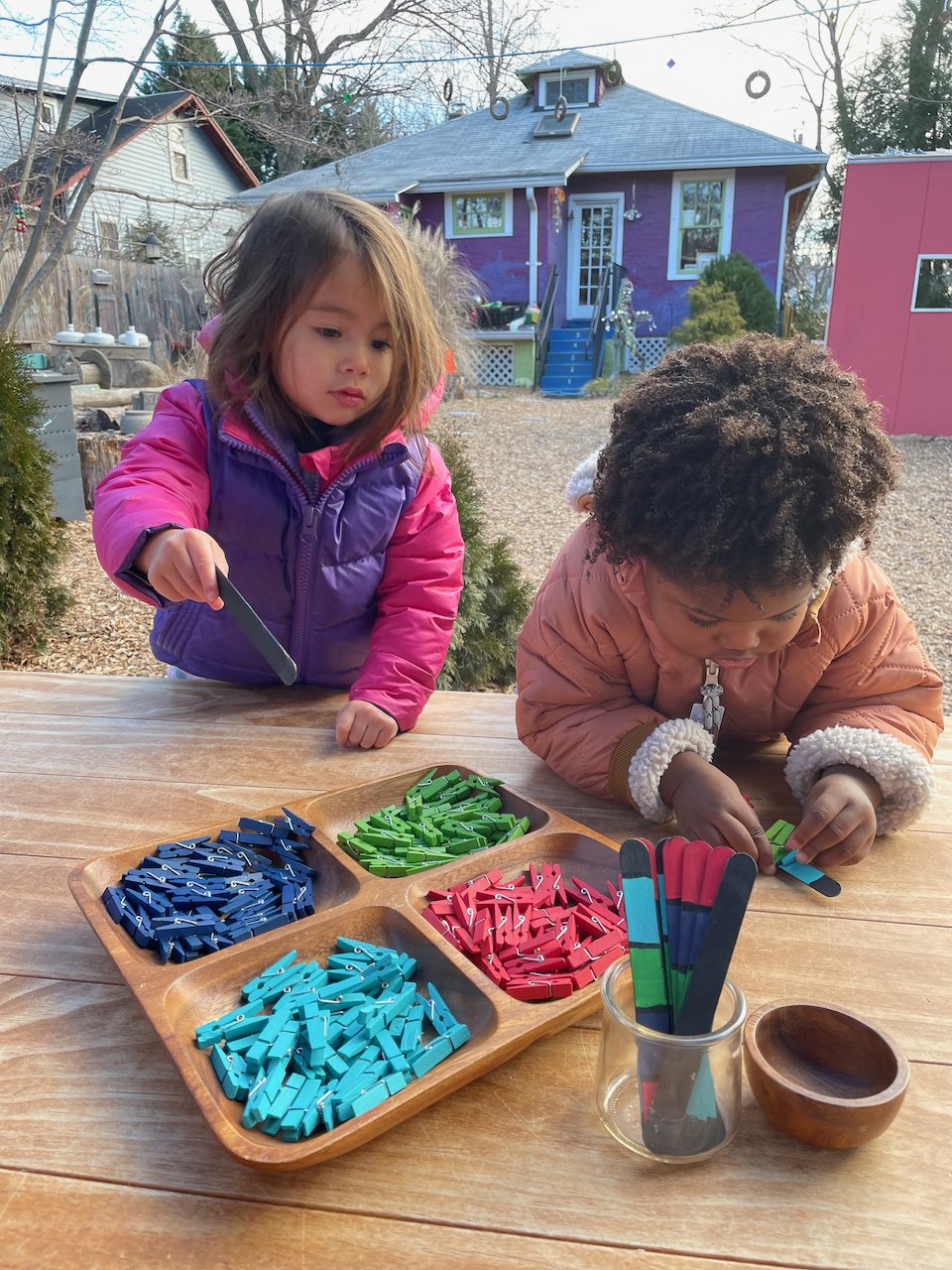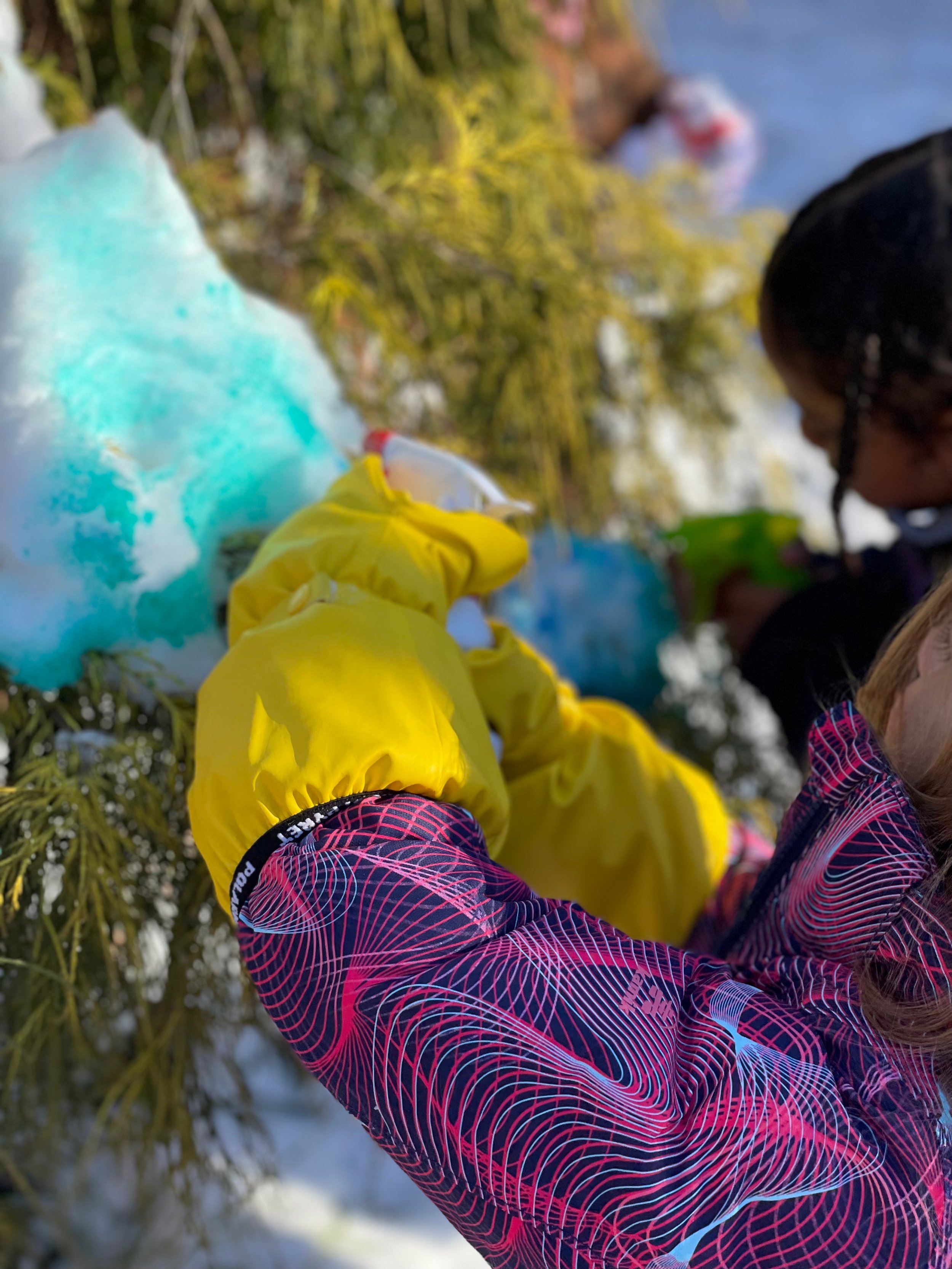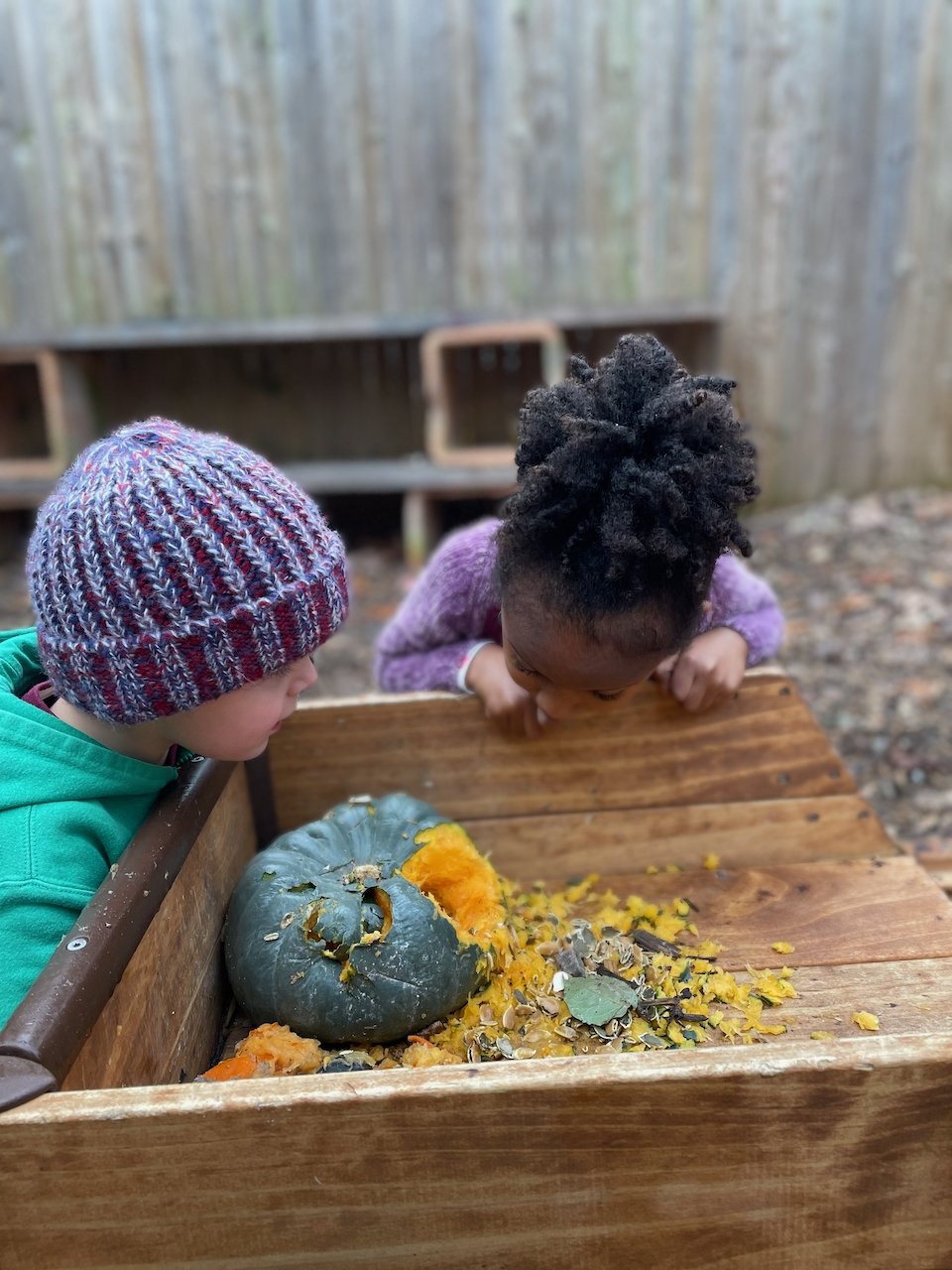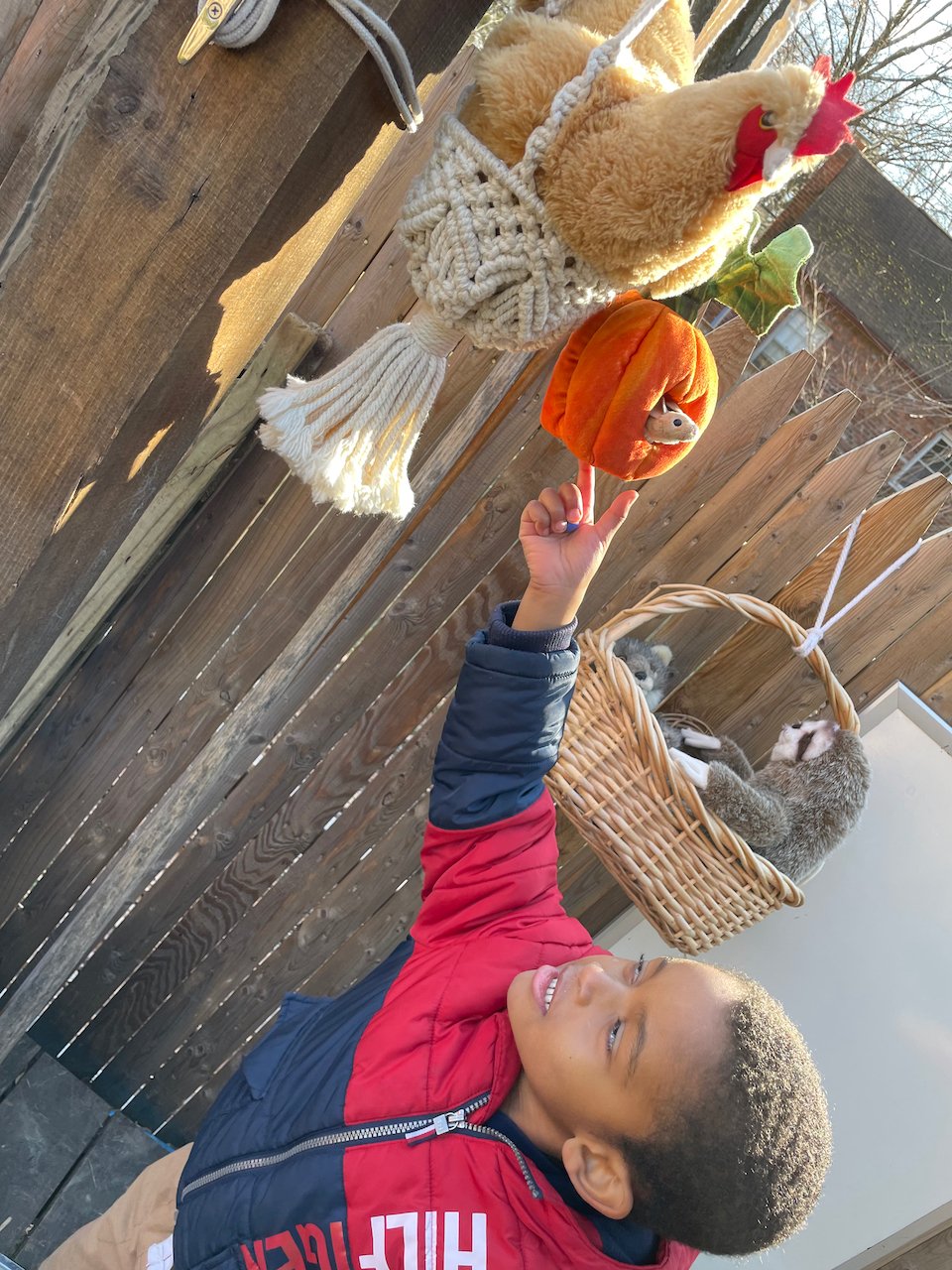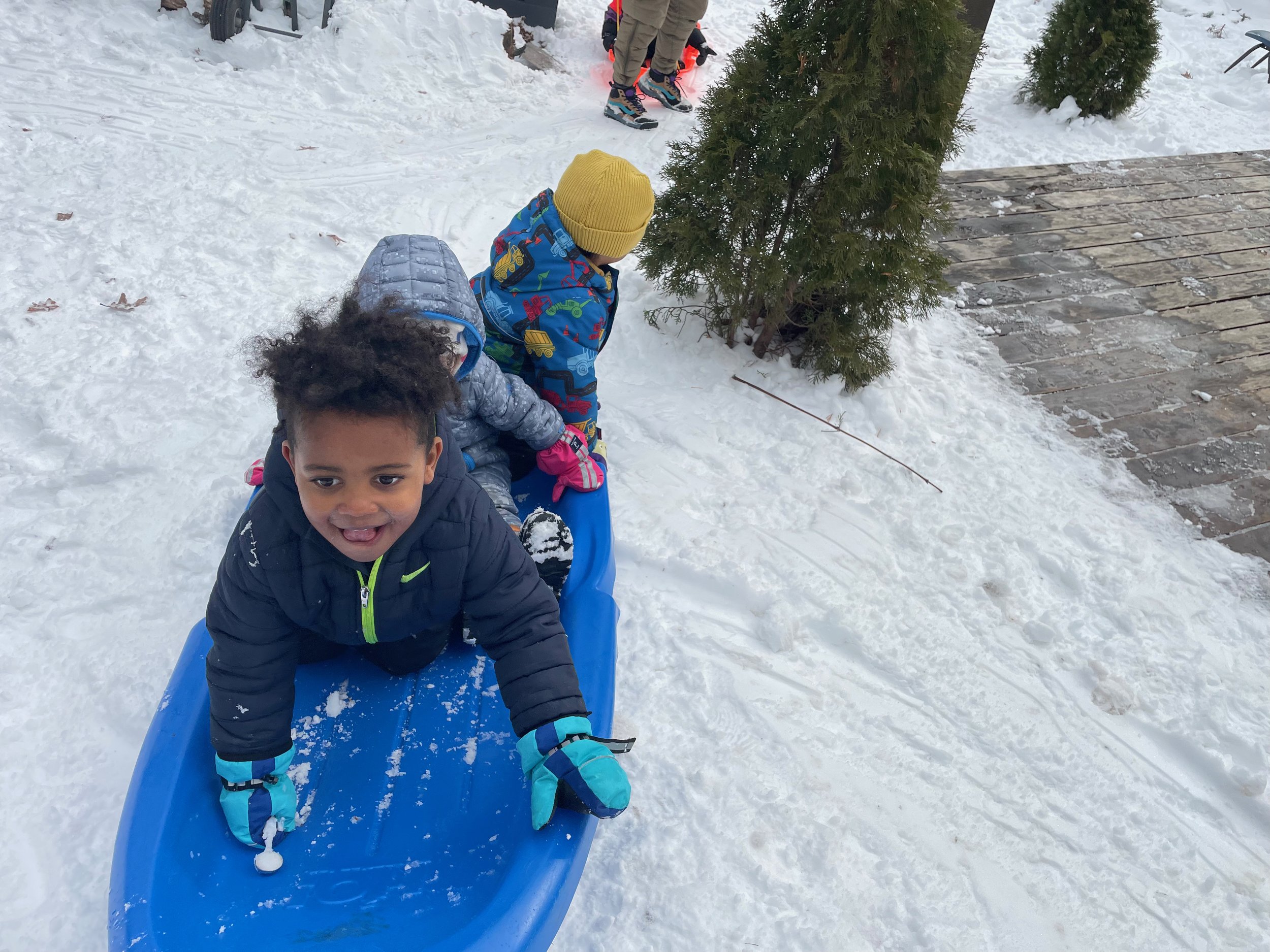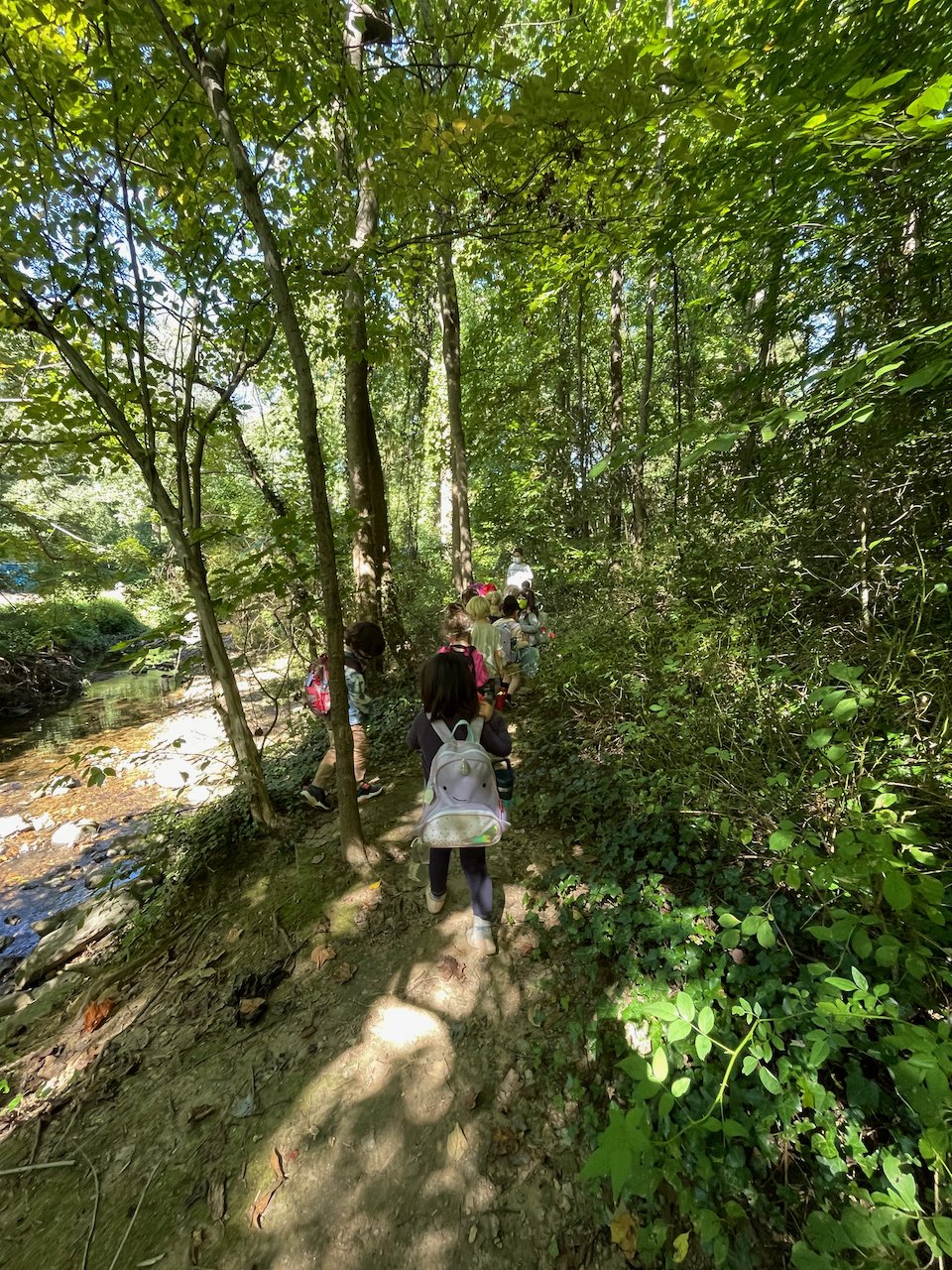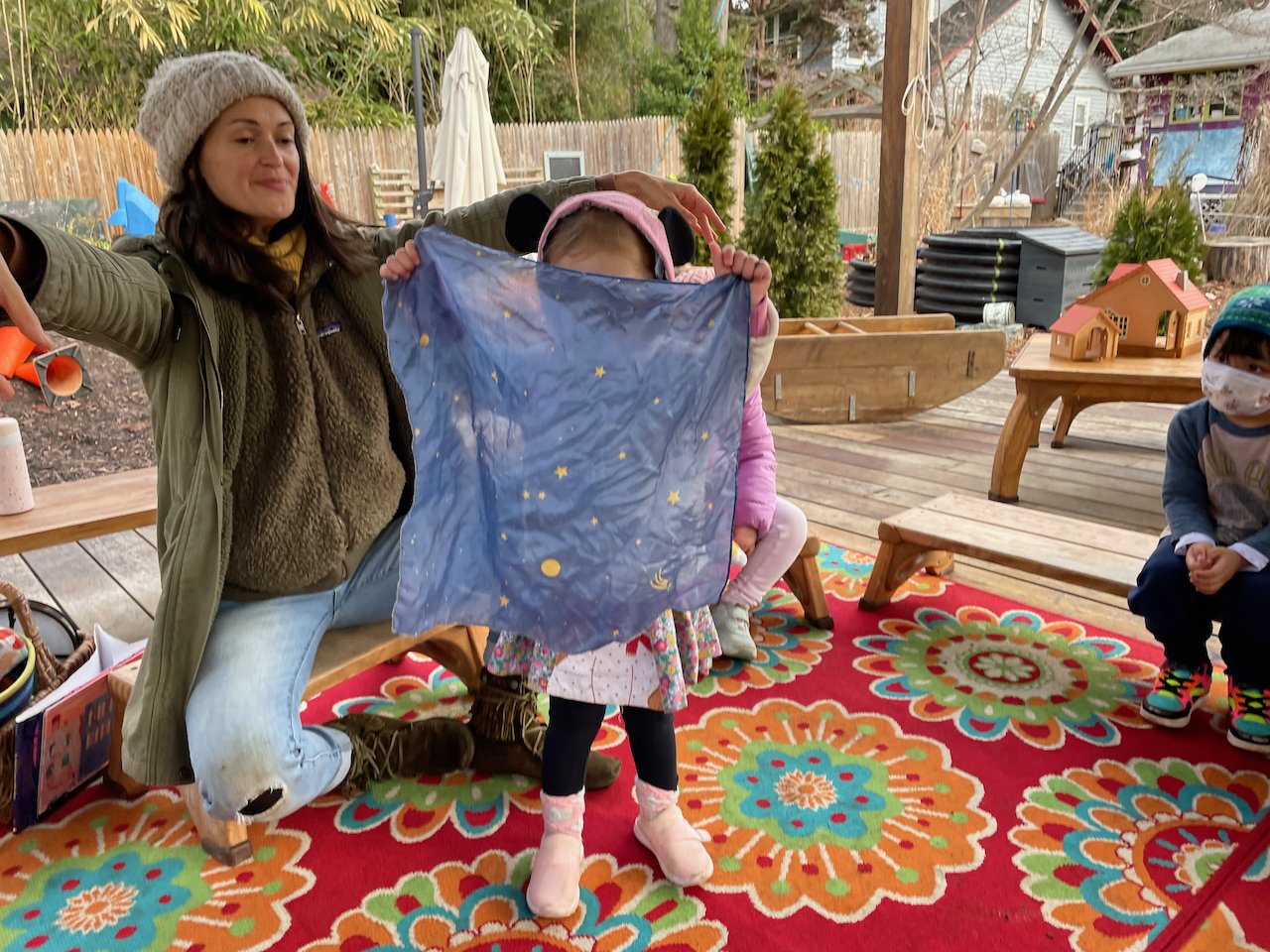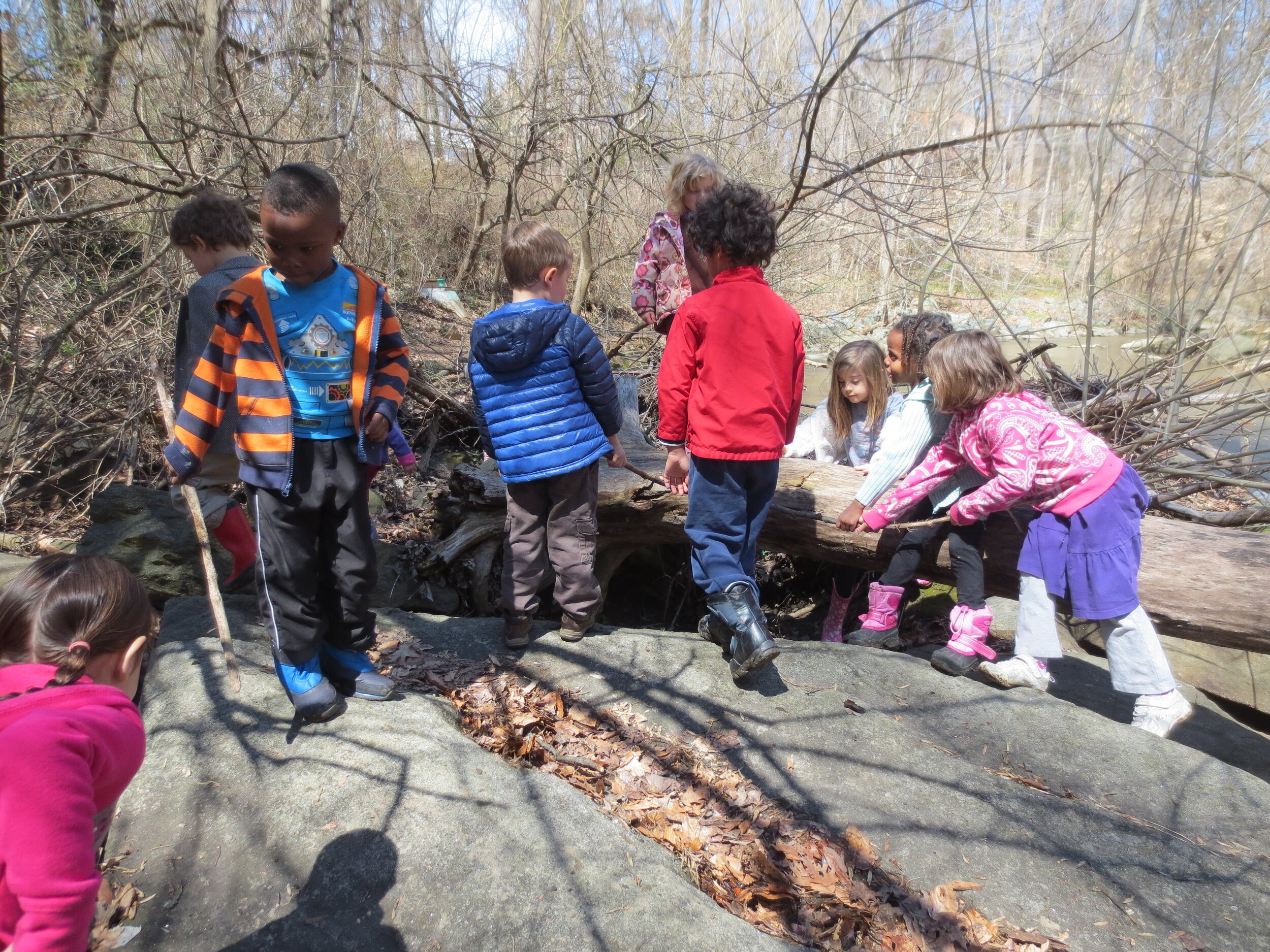
Equity in nature
At Takoma Park Cooperative Nursery School, a central piece of our focus on Diversity, Equity, and Inclusion is equity in nature
If we, as a group of educators and parents, hold to the idea that nature is only defined as pristine and untouched (Edenic) spaces on the Planet, then we are supporting access to that nature only for an elite population even as we block out ownership and access to indigenous children of those very spaces.
If we only talk about nature in terms of tracts of land, either privately owned or designated by City, State, or National governments as parks, those children and their families who live in urban and even suburban settings will come to know that nature is not for them.
Nature is everywhere
Nature is actually everywhere, and scientists, environmentalists, and advocates are quickly understanding where and how nature takes hold in the empty spaces between buildings, roads, and parking lots. We hold to the idea that nature is all around us – in empty lots, in median strips, at the edges of parking lots. In these spaces, young scientists and nature enthusiasts will find thriving ecosystems and in fact, a richer and deeper interaction with the natural world.
If we tell children that these spaces are dangerous, with broken glass, rusty metal, and filled with weeds, we tell them any kind of nature is dangerous and that those who venture there are dangerous themselves.
If children (of all ages) cannot freely venture out to play, tinker, climb, and dig in these wild pockets of nature because their neighbors see the children themselves as destroyers instead of creators, then we ensure that most of the Nation's children will grow disconnected from the natural world.
This focus on nature everywhere is what shapes our outdoor school. This is why we take our students and the older children who join us for our summer programs and #optoutdoors through the neighborhood and into the edges and empty pockets of the spaces around us. We model, for our community, that children belong outside.
Equity in Nature Resources
Equity in Nature Books for Children
Please visit Loyalty Books to purchase these wonderful texts.
Equity in Nature Books for Adults
Equity in Nature Land Acknowledgement
Our school is perched on a small plot of urbanized land above Sligo Creek and Long Branch, both tributaries of the Anacostia River (from Nacotchtank Anaquash) which then feeds into the Potomac (also from the Nacotchtank, Anacostian). Before Takoma Park was a “bedroom community” of Washington DC colonizers, it was and still is, part of the wide-ranging home of the Piscataway Indian Nation.
The labels the creeks currently hold are those given by colonizers. Sligo Creek, the creek we most often walk along and care for, was renamed by workers building the C&O Canal, lifting a name from their own histories (County Sligo in Ireland). The exploitation wrought first by the marked removal of creek and river names along with the pillaging of natural resources is evident each day we walk along the creek. We work to acknowledge our own impact and wish to move towards acknowledgement of the continued contributions of the Piscataway Indian Nation.
“The Potomac River, or the Anacostian River, named after the Nacotchtank tribe; these are all names that you’d say every day,” she explained. “All of these places you walk on have those memories and continuation of our people.”
Dr. Gabrielle Tayac, historian and member of the Piscataway Indian Nation
Dr. Gabrielle Tayac, is a historian and member of the Piscataway Indian Nation, one of the tribes officially recognized by the state of Maryland that resides in Washington D.C., Baltimore and throughout parts of Charles and Prince George’s Counties.
In 2019, the City of Takoma Park’s Mayor Kate Stewart proclaimed Oct. 14th Indigenous People’s Day. This day marks the celebration of “the culture and sacrifice of the first people on this land,” as well as a counter to the designation of Columbus Day as a federal holiday. <source>
